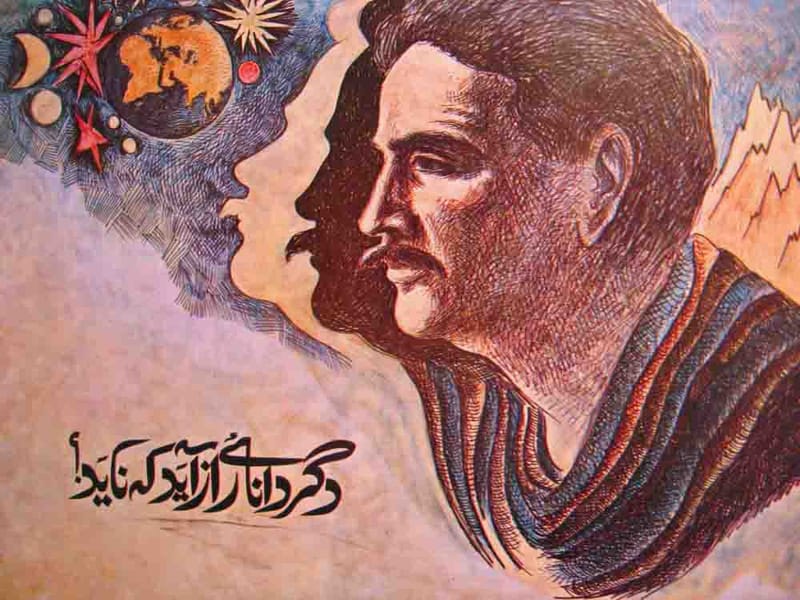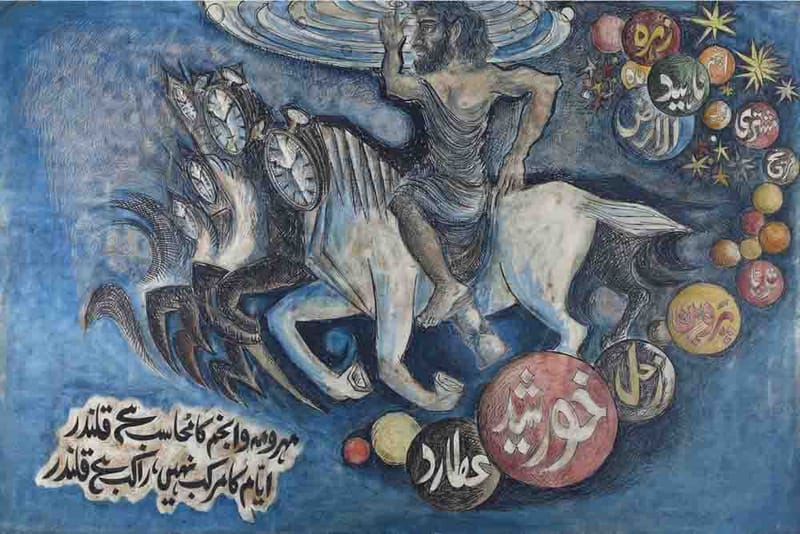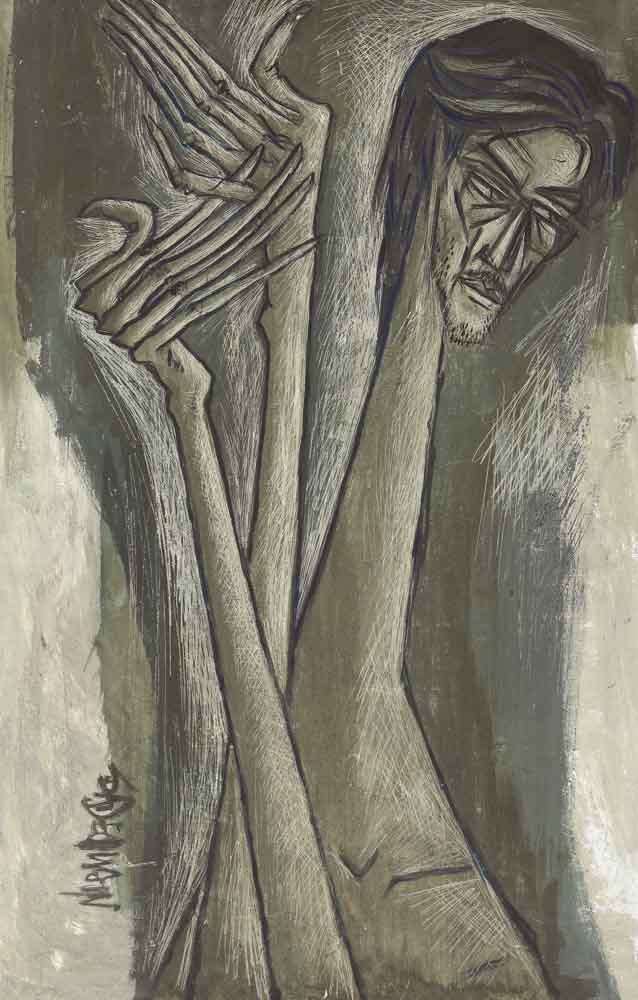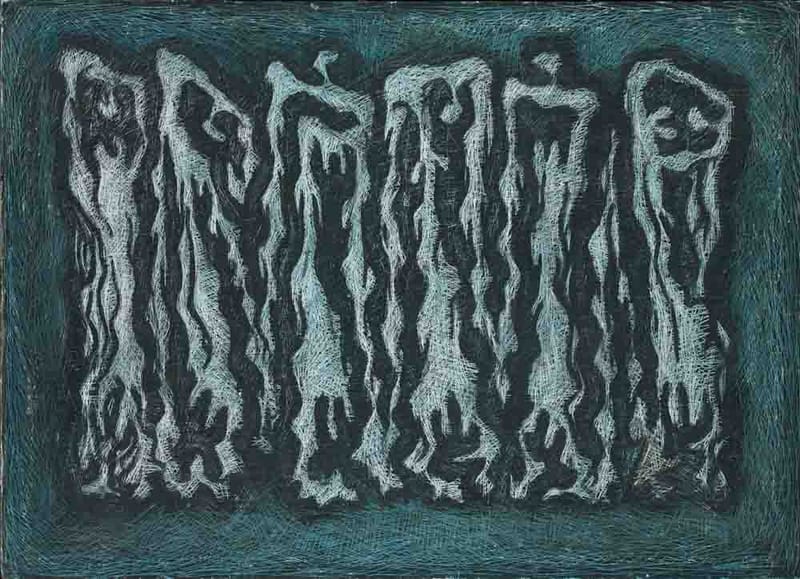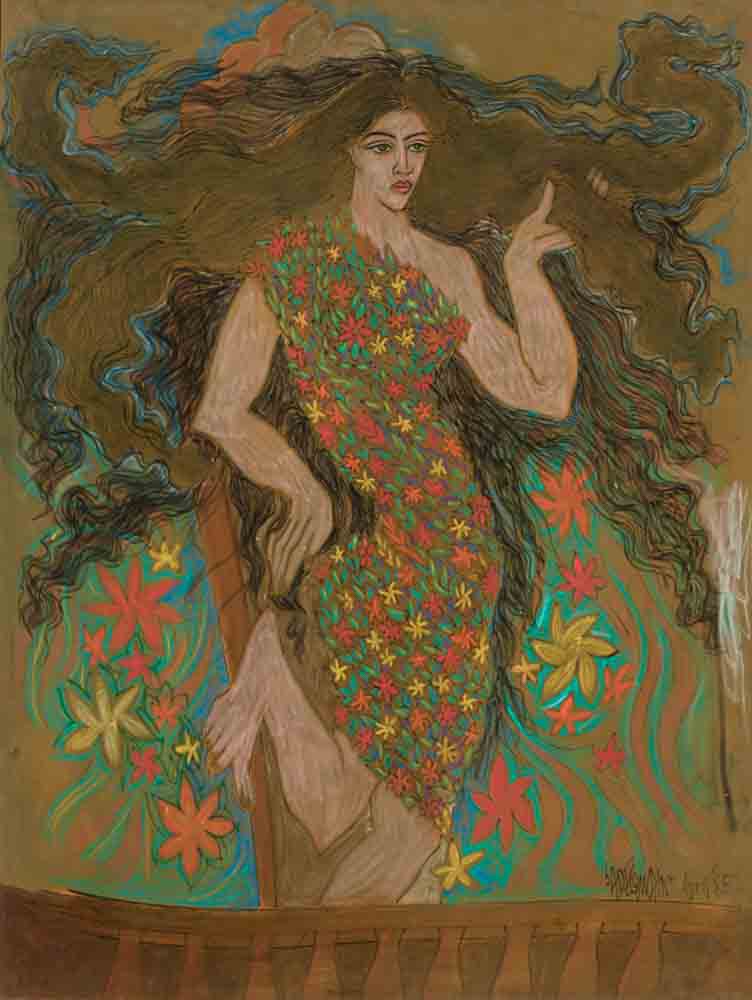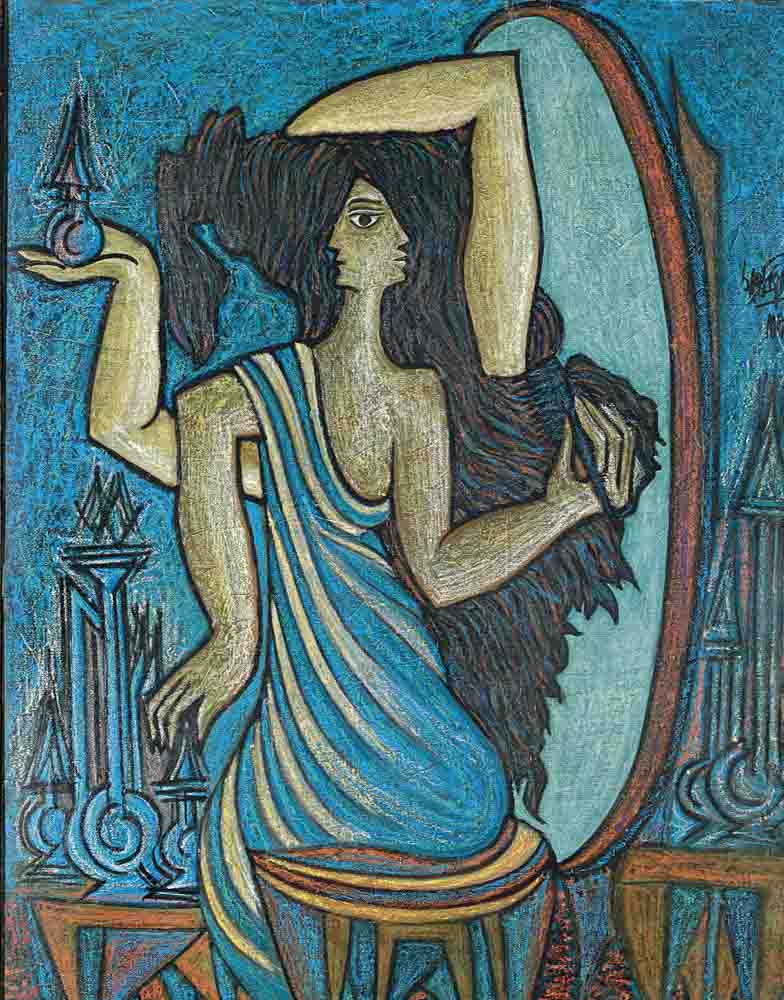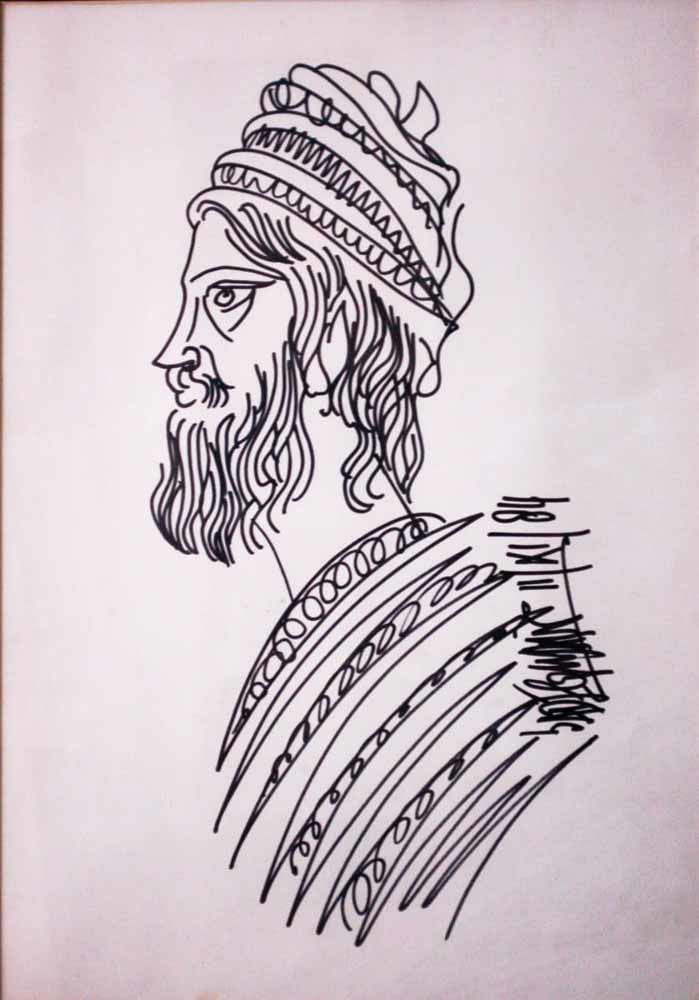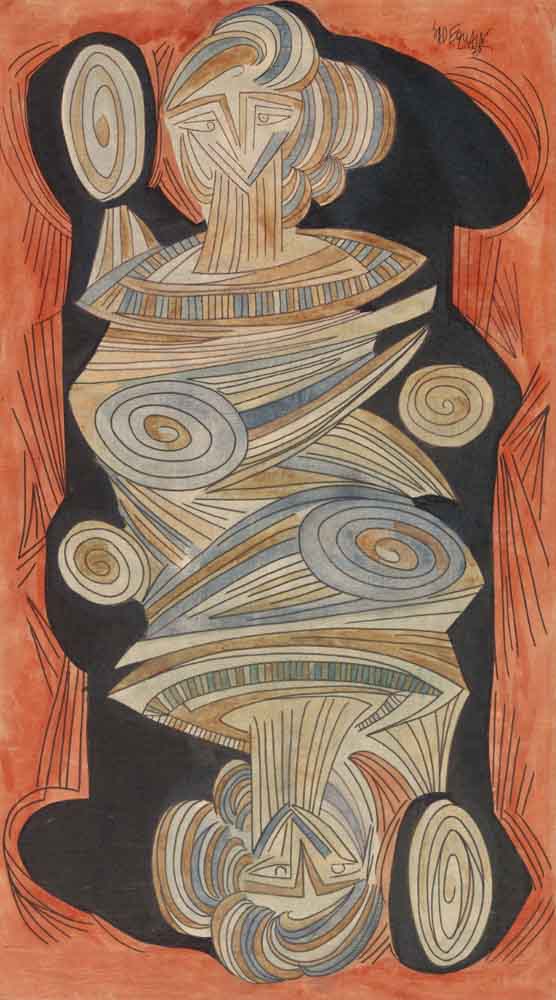Syed Sadequain Ahmed Naqvi
04/10/2024
Syed Sadequain Ahmed Naqvi
Syed Sadequain Ahmed Naqvi (1930-1987) was one of Pakistan’s most celebrated artists, renowned for his groundbreaking fusion of Eastern calligraphy and Western figurative traditions. Born in Amroha, India, and later settling in Karachi after migrating during the Partition, Sadequain's work evolved from his deep connection to both Islamic calligraphy and the figurative art that captured the complexities of human experience. Sadequain’s visual language was profoundly influenced by his early encounters with the wild cacti of Gadani, near Karachi. The contorted forms of the cacti mirrored the resilience and defiance of human existence, and became emblematic of his work. This unique style combined sweeping, calligraphic strokes with simplified yet powerful color schemes, creating a stark contrast that gave his figures and forms structural strength. His mastery of calligraphy extended beyond Quranic verses, capturing the poetic essence of classical literature by luminaries such as Ghalib, Iqbal, and Faiz, breathing life into their words through his visual interpretations. Sadequain’s artistic achievements extended to large-scale public murals, emphasizing the collective human struggle. His refusal to cater to the elite, choosing instead to donate much of his work, underscored his belief that art was meant for the masses. His murals adorn public buildings in Pakistan and abroad, showcasing his prolific output and dedication to sharing art with the world. A pioneer of the Hurufiyya movement, Sadequain redefined calligraphy as a contemporary art form, and his influence is evident in the generations of artists who followed. His legacy is marked not only by his 15,000 paintings and numerous murals but also by his profound impact on the cultural and artistic identity of Pakistan.

